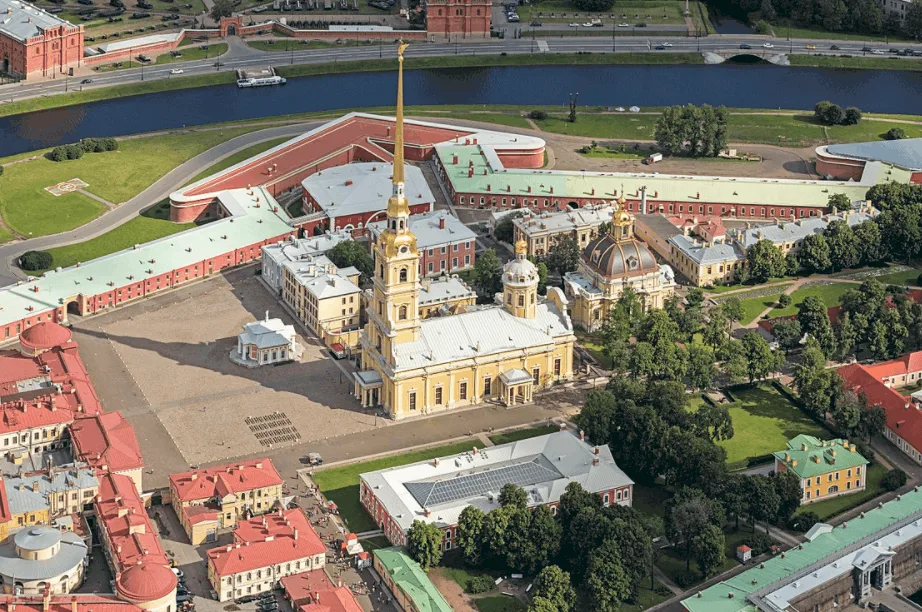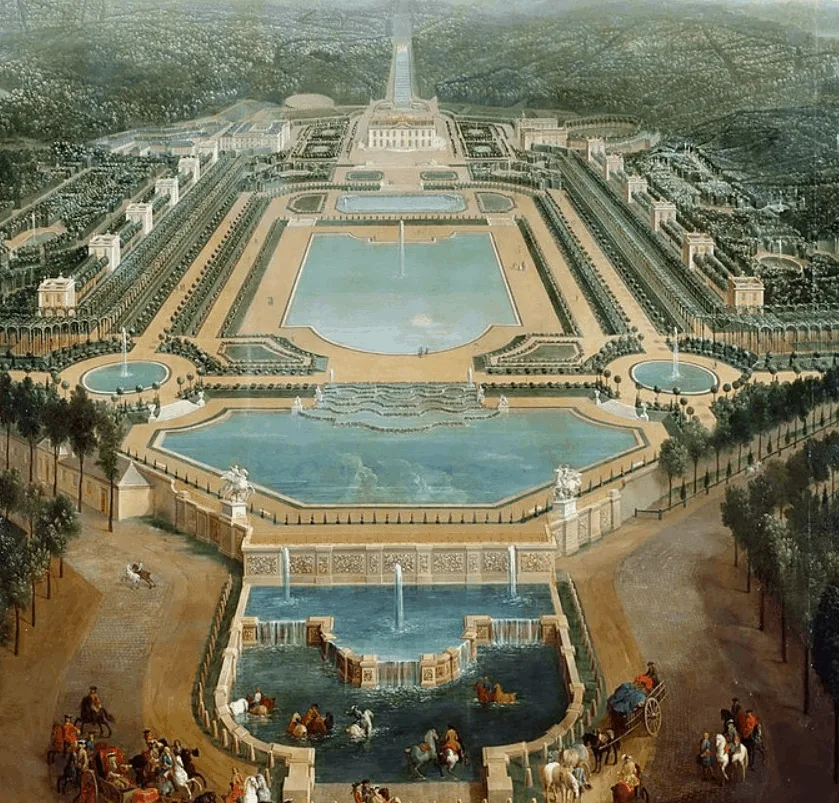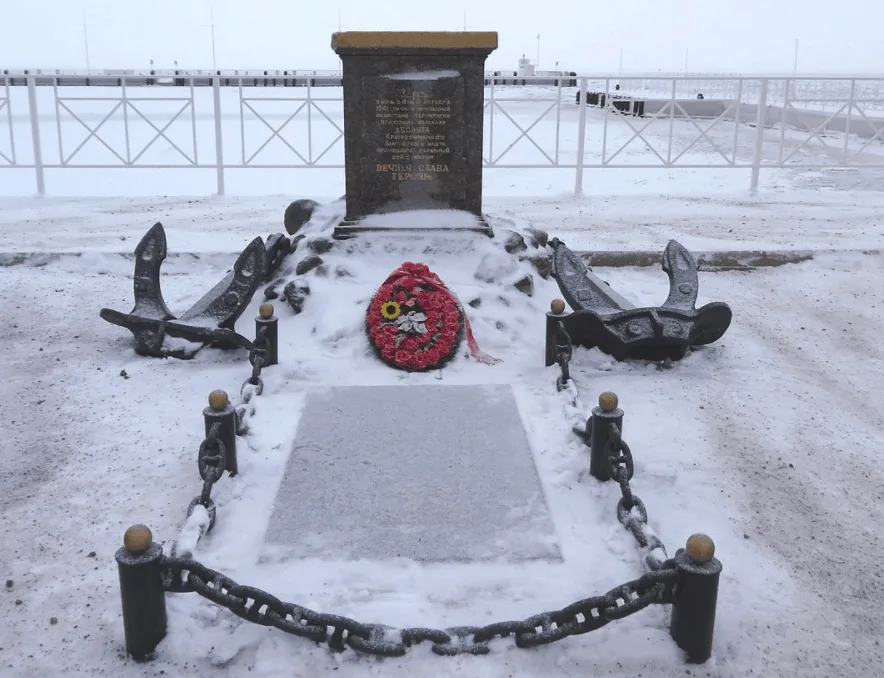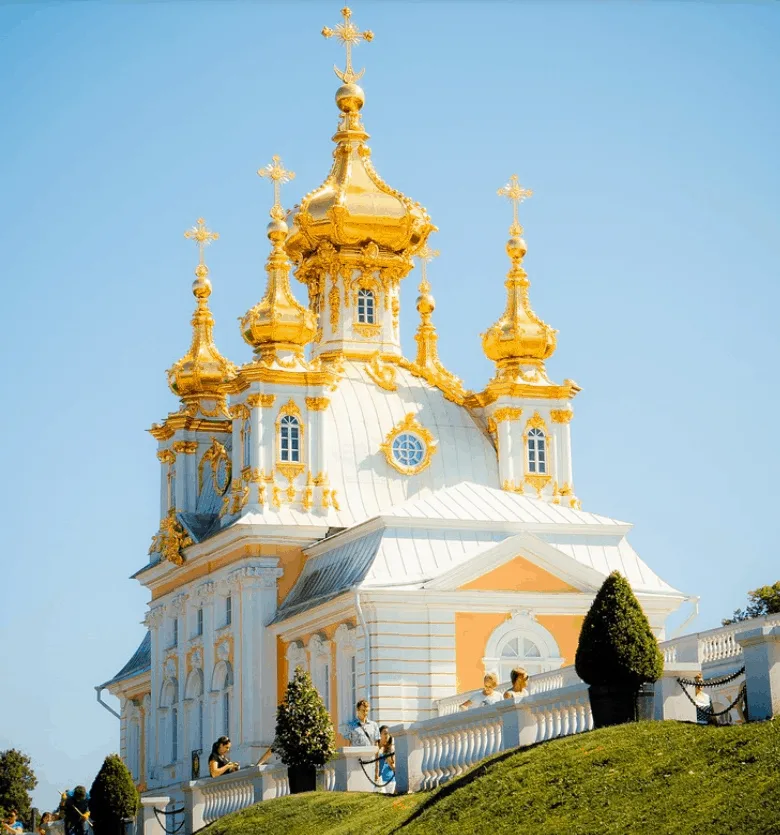If you’re called Peter the Great, then you surely can’t let some French monarch build a greater palace than yours.
That’s why the man built an equally impressive palace near a city that now bears his name.
In this post, you’ll discover the ultimate list with Peterhof Palace facts, one of Russia’s amazing treasures!
1. Peterhof Palace was built in the early 18th century
Peterhof Palace is a collection of palaces and gardens located near the second-biggest city in Russia, Saint Petersburg. The description makes it clear that it was built by Peter the Great (1672-1725), one of the most important figures in Russian history.
The original plan was to turn it into a summer residence as he started the construction of the new capital of Russia, Saint Petersburg, in 1703.
He started working on this country estate which is located just west of the city center of Saint Petersburg in 1709.

2. It’s called the “Russian Versailles”
The original plan wasn’t to turn the palace into an enormous structure initially. That’s why the palace looked quite different in the early 18th century as the upper garden didn’t exist yet and the palace only had a few fountains.
This all changed when Peter the Great visited France in 1717 and visited the Palace of Versailles, the epitome of extravagance built by Louis XIV that was constructed to impress all visitors.
That’s exactly what happened and Peter the Great began a quest to build an equally impressive palace which is now referred to as the “Russian Versailles!”

3. The palace was constructed with a deeper meaning behind it

Peter the Great started construction of his new capital after he had made some important victories over Sweden which allowed Russia access to the Baltic Sea through the Neva River.
Therefore, the construction of the palace was both a way to commemorate the expansion of the Russian Empire, as well as a way to emphasize the different directions Russia was going in to become a country that was modern, scientific, Westernized, and based on the Enlightenment.
4. Another palace was built before Peterhof Palace near the coast
The Peterhof Palace consists of multiple palaces and gardens. The biggest one is referred to as the “Grand Palace” but there’s also the “Marli Palace,” and the “Monplaisir Palace,” along with multiple pavilions.
The latter was constructed in the year 1714 and was meant to become the summer residence of Peter the Great as he could see Kronstadt Island, now a major Russian port city, to the left and St. Petersburg to the right.
It’s here that he made the plans for the entire complex which would really take shape after he visits Versailles a few years later.

5. The original architect was from Switzerland
The architect of the palace was a man from Switzerland named Domenico Trezzini. He was a key figure for architecture in Saint Petersburg, as he perfected the Petrine Baroque style.
One of the most interesting Peterhof Palace facts is that the bond between the architect and the Russian Tsar was pretty close because Peter the Great actually became the Godfather of Trezzini’s son named Pietro!
6. The architectural style became the standard in all of Saint Petersburg
This style was used extensively in the newly founded Russian Capital and one of his most renowned works is a famous church called the Saints Peter and Paul Cathedral in Saint Petersburg.
It’s fair to say the Trezzini left his permanent mark on Saint Petersburg!

7. The garden designer was chosen for a particular reason
Another one of those fascinating Peterhof Palace facts is that the garden designer was chosen because he once worked with landscaper André Le Nôtre, famous for his work at the gardens of Versailles.
French garden designer Jean-Baptiste Alexandre Le Blond designed the gardens of Peterhof Palace in 1714 but unfortunately for him, died just 5 years later in Saint Petersburg.

8. Peter the Great never got to see the completed palace
Peter the Great also didn’t have the luck as Louis XIV, the longest-reigning monarch in European history, because he died in 1725.
This means that he never really got to see what his palace would become as he didn’t even see the completion of the initial phase which lasted from 1714 until 1728.
9. The palace was seriously expanded by Elizabeth of Russia
The main sections of the Grand Palace and the additional palaces were completed during the initial phase of construction. A few decades later, the work was continued by Elizabeth Petrovna, the Empress of Russia from 1741 until 1762.
She hired another European architect, the Italian Bartolomeo Rastrelli, who is renowned for his work in Russia including the amazing Winter Palace.
The Grand Palace was seriously expanded between 1745 and 1755 with the addition of wings and was turned into the central palace of the entire complex.

10. The main section of the palace was built on a cliff
One of the most fascinating Peterhof Palace facts is that the Grand Palace was built on a cliff that reaches a height of about 16 meters (52 feet).
This cliff is located about 100 meters (328 feet) from the shore and the entire lower garden is located between this cliff and the sea, covering an area of about 1.02 square kilometers (0.39 square miles).
11. The Grand Cascade was modeled on another palace in France
The Grand Cascade is the area resembling a waterfall just in front of the Grand Palace. This area contains multiple amazing fountains, including the famous Samson Fountain.
Peter the Great got his inspiration for this area again in France as he modeled it after the Grand Cascade built by Louis XIV at his Château de Marly, which ended up being destroyed in 1806 after becoming private property.

12. The Grand Palace is much smaller than it actually looks
If you stand at the foot of the cliff just in front of the Grand Palace, you would assume that it’s huge. One of the most peculiar Peterhof Palace facts is that the Grand Palace isn’t actually that big because even though wide, it’s quite narrow in shape as well!
Well, if you compare it with other palaces that is, such as Buckingham Palace or Potala Palace for example. It has “only” about 30 rooms, not 100’s or even 1,000!
That doesn’t mean the rooms aren’t amazing though, just look a the “Ballroom” below to understand what we mean!

13. The Samson fountain has a double meaning
The Samson Fountain was built in the 1730s and depicts the moment when Samson tears open the jaws of a lion.
This scene has a double meaning because the lion is an element in the coat of arms of Sweden which the Russians defeated, and one of the most important victories was won on St Sampson’s Day.
The lion shoots water up to 20 meters (66 feet) in the air as well, the highest of all fountains at the palace!

14. The palace was the scene of a horrific massacre during World War II
One of the most intense and important battles of the Second World War happened near Saint Petersburg. What initially started great for the Germans eventually became hell as many historians believe they lost the war here.
They did capture the Peterhof palace though in 1941 and the Russians quickly replied by dropping over 500 marines on the beach to recapture the important palace.
They were blasted with heavy artillery and had nowhere to run. The marines that weren’t shot to death were chased by German shepherds and bitten to death in the gardens of the palace just 2 days after they landed on the beach on October 7, 1941.
A memorial commemorating the soldiers that lost their lives on these horrible days can be found in the lower garden of the palace.

15. The original name of the palace was only restored in 1997
After World War II, the Soviet government thought that Peterhof Palace sounded too German, even though its name is actually derived from the Dutch word “hof,” which means “court.”
That’s why they changed it to “Petrodvorets” (“Peter’s Palace”) in 1944, something that was only reversed back in 1997 when the original name “Peterhof Palace” was restored.
16. Many ornaments of the Peterhof Palace were gilded in the early 2000s
For the 300th anniversary of the city of Saint Petersburg in 2003, the Peterhof Palace was seriously renovated and this included a huge effort to add new gilt-work.
The result is simply amazing because most of the decoration elements of the palace are now covered with shiny gold, simply amazing!
Yes, even the domes of the church in the palace complex were gilded!

17. Peterhof Palace is visited by millions of people every year
One of the most fascinating Peterhof Palace facts is that it’s not only a UNESCO World Heritage Site, together with the entire historical city center of the city of Saint Petersburg, but also that it’s one of the most popular tourist attractions in all of Russia!
Well over 5 million people visit the palace every year, and I’m sure that after reading this post, you know exactly why!

